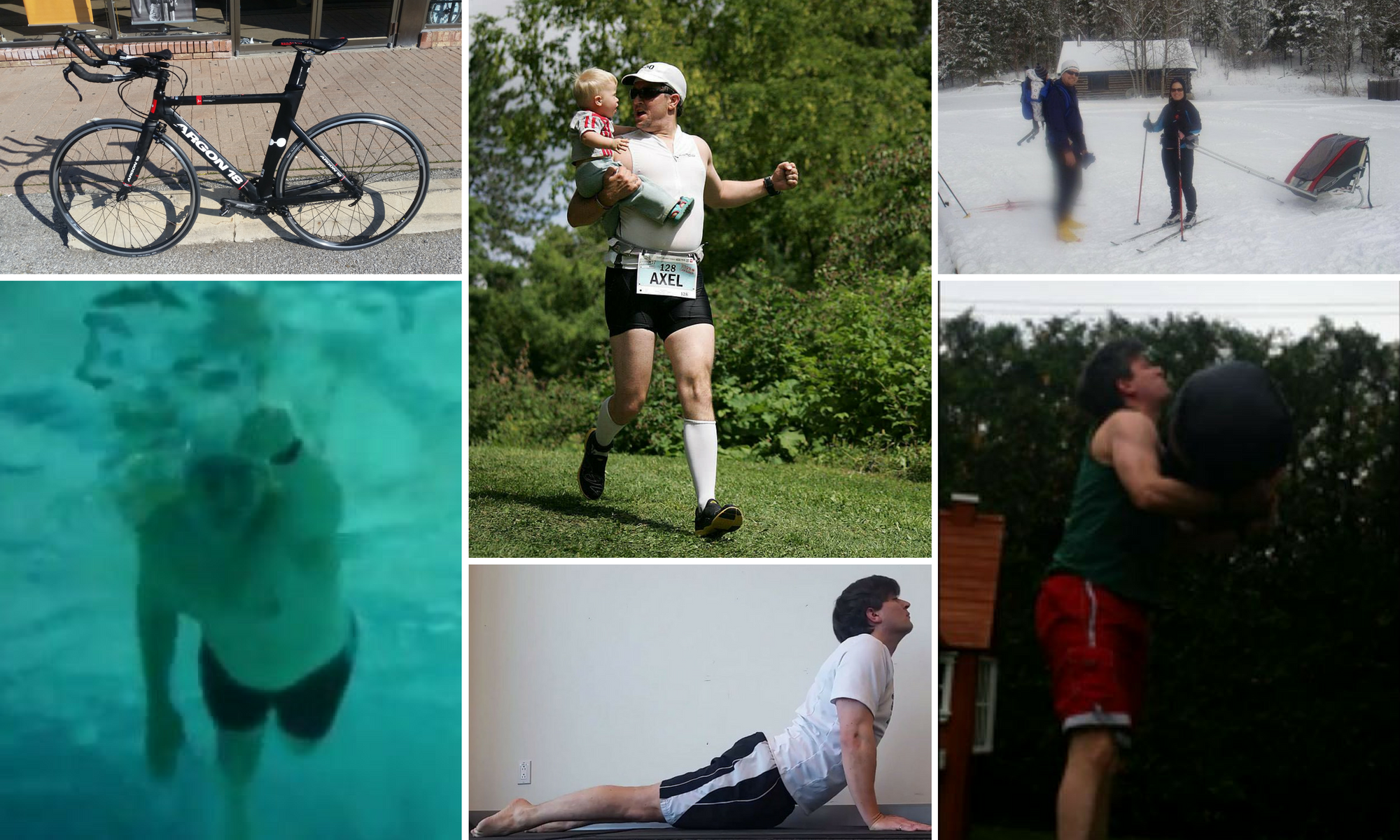This past weekend was somewhat of a misadventure. On Sunday, I was supposed to do the Bracebridge Olympic Distance Triathlon; the Sprint Distance had been held the day before, and was (according to the reports I read) very challenging due to the rainy weather, but ultimately successful.
Keeping the kids happy at the race site for the duration of an Olympic is always challenging, so this time we made the safe bet of having my wife stay at the cottage with them while I went onto the race in Bracebridge. The plan was for her to have extra help with the kids in the form of their grandmother; but after grandmother #1 and #2 both cancelled. My wife resolved to muddle through a Sunday with the kids as best she could…trapped in the cottage due to the continuing rain and the fact that our only vehicle at the cottage would be with me.
We’d called on friends with nearby cottages who might lend a hand to no avail. On Saturday night, the Lightning Kid required three feedings; our best explanation at the time was that he was teething, I’m not so sure any more since he developed a bit of fever by Monday. Still when it was time for me to get up, my wife said she wanted to come along merely for the opportunity to have a nap in the car. It was still raining heavily, and showed no signs of stopping, and we tried to imagine how she could keep the kids happy in the rain. Even nearby Santa’s Village wouldn’t open till 10AM, and it’s outdoors too, so no reprieve from the rain. I didn’t want her to feel forced to come along, yet what kind of man would abandon his wife to fend for herself against a baby and a toddler within a non-baby-proofed environment sure to bring on cabin fever? I didn’t have much choice, and I believe I did what was right – I stayed with my family and no showed the race.
Of course, I was in a real funk the rest of the day. The kids did things to delight me, but the smiles didn’t last. With hours freed up, and the rain giving way to occasional bursts of clearer weather, I had opportunities to go shopping in Huntsville, maybe a swim or a run. I didn’t feel like doing anything; I honestly think I was mildly depressed. And ashamed of feeling that way to boot – Awww, so the triathlete didn’t get to run his little race, poor baby. That might seem to have been my problem on the surface, but I had enough time to think about why it really bothered me.
In this life, we are not rewarded for failure, in fact, it is often treated as unacceptable. A salesman can’t simply say: “The client didn’t want to buy” – they’re expected to close the sale through persuasion or whatever trick they can pull. It’s the same in almost any work or academic environment – you don’t just get to throw up your hands and say “oh well” when things don’t go your way; you’re expected to have contingency plans, work-arounds, etc.. And I’m one of the kinds of people that likes thinking things through and visualizing before hand so that I’ll have a solution to a problem that might come my way, yet I’m not really very organized at executing a plan. I should have been better prepared for inclement weather and had ways that the kids could be managed within the limited space of the cottage, and I should have sold my wife on those ideas, and I was going to beat myself up about those short-comings until I was too tired to do it any more. And I did feel strangely tired; probably the depression at work. I couldn’t believe I had planned on doing a tri that day; I felt too sluggish to go up and down stairs.
Though I love it up there, on that Sunday, I couldn’t wait to leave. By the time we had the car packed and ready, we had somehow managed to get in some of the worst cottage-country traffic that day had to offer. It was a long drive home, but luckily, the kids behaved very well, and being stuck in the car was enough to get me craving a little physical activity. I had promised my wife that she would not get short-changed on her opportunity to get in a training run. When we got back, I set up the Chariot and got Shark Boy onto his glider bike. We went out on a 4km run as a family in preparation for the Levac Attack, which we will also be doing as a family in the same way.
 |
| Shark Boy rode nearly 2.5 km on the way out |
 |
| … but opted for the luxurious route home. |
It was a lot of fun, and a good proof of concept for what we can do as a family. It made me feel better because my goal is not to race in a particular event, but to enjoy an active, multisport lifestyle that is compatible with my family. Failing at a particular task happens to us all, the act of picking oneself up again is what’s important and that can be to try the same thing again or to fight another battle in the war (pardon the mixed metaphors).
Have you ever no-showed a race? How did it make you feel?











